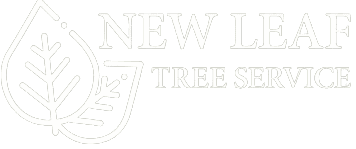Louisville Tree Trimming Case Study: Preserving a White Oak Legacy
In the Highlands neighborhood of Louisville, there’s an old white oak—broad, stately, older than the sidewalk beside it. When the homeowners reached out, this beloved tree posed real risks: cracked branches, debris after storms, and anxious mornings every time the wind picked up. But cutting it down? That was never an option.
Based in Louisville, KY
ISA-Certified Arborists | Fully Insured | Family-Owned
Serving Jefferson County and surrounding areas since 2009
Project Goals & Property Overview
The home sits on a slope, framed by flowerbeds and a narrow driveway. The oak overhung parts of the roof and nearly every corner of the yard. The client had three core wishes:
- Remove deadwood and reduce hazards around the roofline
- Improve air flow and sunlight through the dense canopy
- Keep the natural beauty and overall size of the tree
In other words: safety and preservation, not destruction.
The Process: Certified Tools & Precise Cuts
Our ISA-Certified Arborist began with a full Visual Tree Assessment (VTA), checking for fungi, root flare issues, and past branch wounds. Luckily, the trunk was sound and showed no signs of internal rot. That gave us the green light to prune.
Each pruning decision followed ANSI A300 standards. Here’s what we tackled:
- Crown Cleaning: Removed broken and diseased limbs threatening the home
- Crown Thinning: Selectively opened interior spacing to promote airflow
- Crown Reduction: Carefully shortened overextended limbs away from the house
- Epicormic Shoot Removal: Cleared base sprouting to stabilize energy use
We never topped the tree. Topping causes long-term damage and ruins natural growth patterns.

“Our tree looks incredible. It’s like a weight’s been lifted—literally and emotionally. We couldn’t imagine this yard without it—and thanks to your team, we don’t have to.” — A Louisville, KY Homeowner
On-the-Ground Challenges
This wasn’t your typical job site. We had a narrow workspace with mature landscaping underneath, limbs close to power lines, and high humidity that added fatigue risk.
Our crew used:
- Certified climbing gear to access the canopy safely
- Drop cloths to protect flower beds below
- Hand saws and pole pruners for clean, collar-level cuts
- On-site chipper for eco-friendly removal
Pruning large mature trees yourself is dangerous and usually leads to incorrect cutting that harms long-term growth. Ladders, chainsaws, and power lines do not mix—hire a certified arborist instead.
“We treat every tree like it’s the oldest one on the block. Our goal isn’t just cleanup—it’s intelligent care based on biology, safety, and future growth.” – New Leaf Team Lead
Safety Isn’t Optional—It’s Our Standard
All activity was supervised by crew leaders trained in ANSI Z133 safety protocols. Our climbers wore helmets, hydration packs, and used double-rope systems. The team also checked daily for nesting birds and visible wildlife activity before beginning cuts.
Cleanup included removing wood chips, rinsing sidewalks, and advising the homeowners on root zone disturbance prevention.
Frequently Asked Questions
Q1: When should I prune my tree in Louisville?
A1: Late winter through early spring is ideal for most trees here. If needed, late summer pruning can be okay, but avoid spring flush when trees are leafing out.
Q2: Is topping a tree ever a good idea?
A2: Never. Topping weakens structures, creates decay pockets, and encourages risky sprouting. We follow best practices from Trees Are Good.
Q3: How often should mature trees be pruned?
A3: Every 3-5 years is typical, but high-risk trees may need yearly evaluations, especially near homes or utility lines.
Q4: Can landscaping around roots harm trees?
A4: Yes. Compacted soil, mulch piled against trunks (“volcano mulch”), or excavation in root zones can stress even healthy trees. Keep mulch 2–4 inches deep and away from the bark.
Q5: How do I know if my tree needs a professional inspection?
A5: If you see dead limbs, leaning trunks, mushroom growth near the roots, or storm damage, it’s time to call a certified arborist in Louisville.
Need Help with a Large Tree?
We’ve helped hundreds of Louisville homeowners trim safely, stay compliant with local tree codes, and preserve legacy trees. Book a free inspection—we’ll show you exactly what’s possible.
Visit our Tree Removal Services page for more examples and educational resources.
